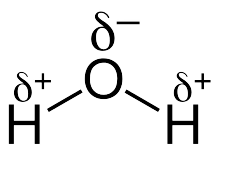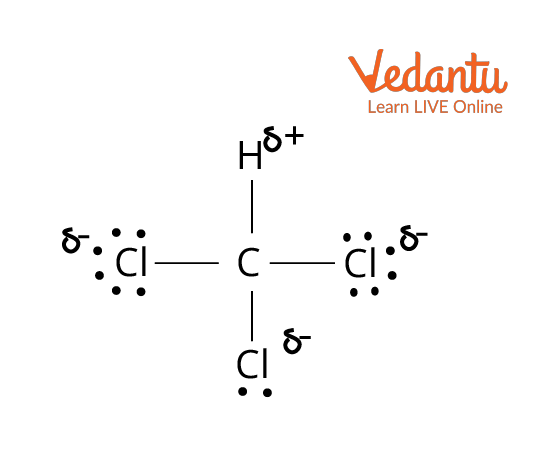




An Introduction to Polar Compounds
Molecules or their chemical groups have an electric dipole moment with a negatively charged end and a positively charged end when they are polar, which in chemistry is the separation of electric charge. This separation of electric charge is known as polarity. In a bond, this polarity difference leads to unequal sharing of electrons between the atoms, as electrons will be pulled closer to the atom with the higher electronegativity. The difference in electronegativity determines the nature of chemical compounds. Compounds are classified as polar, non-polar, and ionic compounds based on electronegativities. Polar covalent compounds conduct electricity.
Knowing What Are Polar Compounds
Polar compounds are chemical substances that are bound together by polar covalent bonds. A chemical species known as a 'polar compound' is one that has two or more atoms that are held together by covalent bonds that are polar in character and that share electrons unevenly. When two atoms are joined together by covalent bonds then shared pairs of electrons are shifted toward atoms that are more electronegative in nature. The electronegativity of an atom is defined as the tendency to attract electrons. Hence, more electronegative atoms attract electrons and increase the electron density towards itself.
Characteristics of Polar Compounds
Non-bonding of an electron pair in a molecular orbital also accounts for the polarity of a molecule.
Polar compounds always have some net value of dipole moment. The presence of opposing charges in a molecule results in a net dipole.
Polar substances like distilled water and ethanol cannot conduct because the dipoles are locked within the molecules by covalent bonds. Unless the polar bond is broken heterolytically to form two oppositely charged ions, a polar compound cannot conduct electricity.
Polar molecules having covalent bonds possess high boiling and melting points due to the presence of dipole-dipole attraction, as compared to molecules that are joined by different forces of attraction like van der Waal forces.
The forces of attraction are arranged as
Ionic bonds > hydrogen bonds > dipole-dipole > van der Waal forces.
Estimating Factors That Determine the Polarity of Compounds
Symmetry of a compound- Symmetry is inversely proportional to polarity. The more the symmetry of a molecule, the less polarity. The more symmetrical arrangements lead to the cancellation of the dipole moment. This reduces the polarity of the molecules.
Number of identical atoms- The presence of identical atoms nullifies the electronegativity difference and ultimately invalidates the polarity.
Number of lone pairs of electrons- Lone pairs are defined as electrons that are present in pairs around the atoms and do not participate in bonding with other atoms present for bonding. The presence of lone pairs around the central atoms enhances the chances of polarity by localisation of electrons around the atoms.
Shape of a molecule- The shape of a molecule determines the position of atoms and direction of the dipole moment because the dipole moment being vector quantity always moves from positively charged atoms to negatively charged atoms. Hence, it acts as a contributing factor toward polarity.
Some Examples of Polar Compounds
A molecule may be polar or nonpolar. A nonpolar molecule has a structure of its atoms lined up in a way that the orbital electrons in the outer region cancel out the electronegativity.
In general, pyramid-shaped and V-shaped molecules are said to be polar. Whereas the linear molecules are said to be non-polar in nature.
Water is said to be a polar molecule due to the difference in the electronegativities between the oxygen atom and the hydrogen. Oxygen is a highly electronegative atom when compared to hydrogen.
Fats, petrol, oil, and gasoline are said to be non-polar molecules as they do not dissolve in water and nonpolar is insoluble in water.
Glucose is one more example of a polar molecule based on the arrangement of the oxygen and hydrogen atoms in it.
More examples of Polar Compounds
Water - H2O
Ammonia - NH3
Sulphur dioxide - SO2
Hydrogen Sulphide - H2S
Ethanol -C2H6O
Non Polar Compounds
Any of the noble gases: He, Ne, Ar, Kr, Xe (These are atoms, not technically molecules.) Any of the homonuclear diatomic elements: H2, N2, O2, Cl2(These are truly nonpolar molecules.)
Carbon dioxide - CO2
Benzene -C6H6
Carbon tetrachloride - CCl4
Methane - CH4
Ethylene - C2H4
Hydrocarbon liquids, such as gasoline and toluene
Most organic molecules.
Do Polar Covalent Compounds Conduct Electricity?
Since polar covalent compounds' molecules have charge separation between them and behave as ions in aqueous state, they are excellent electrical conductors. These polar molecules conduct electricity and can move about freely in a solution.
Total Polar Compounds
During continuous frying, peroxides and hydroperoxides produce total polar compounds (TPC), comprising short chain fatty acids, aldehydes, ketones, alcohol, and nonvolatile products, whose polarities are greater than those of triglycerides.
These factors, which give end products or fried oil an unfavourable colour, odour, and excessive viscosity, are mostly to blame for the quality degradation of deep-fried foods. Thus, it is hypothesised that TPC produced during the frying of edible oil is responsible for the negative impacts on bodily health.
The detrimental effects of frying oil on health have only recently come to light. According to a report, oxidised fat and deep-fried oils may have a disproportionate role in the development of metabolic syndrome. Inhibiting development rate, encouraging liver size, and attenuating detoxifying enzymes connected to defence mechanisms against in vivo lipid peroxidation are a few ways that frying oils may impair liver function. Furthermore, frying oil and its polar components may disrupt the expression of the genes involved in vitamin A metabolism in the embryonic liver and result in malformations in pregnant mice. To our knowledge, however, the cellular impacts of TPC (the primary ingredients in frying oils) have been underappreciated.
Difference Between Polar and Nonpolar Compounds
Gaseous Polar Compounds Examples
H2O- H2O has a slightly bent structure in which an oxygen atom is present in the central position. Here, oxygen being more electronegative pulls electrons towards itself. This creates a slightly positive charge at hydrogen atoms and a slightly negative charge at oxygen atoms. Oxygen due to the presence of two lone pairs of electrons increases the lone pair-lone pair repulsion and results in the bent shape of the molecule. This molecule exists in all three forms i.e., solid, liquid and gas.

Structure of Water Molecule Showing Bent Shape or V-shape
CHCl3- This is known as Trichloromethane (chloroform). This comes under polar molecules due to the presence of net dipole because of electronegativity difference.

Structure of Trichloromethane Molecule
Key Features of Polar Compounds
Polar compounds are held together by covalent bonds.
There is unequal sharing of electrons between the atoms.
They should possess an electronegativity difference of more than 0.4.
Polarity of a molecule is affected by symmetry, lone pairs of electrons, and the shape of molecules.
FAQs on What are Polar Compounds?
1. Why is CCl4 nonpolar yet CHCl3 is polar?
The molecule of carbon tetrachloride (CCl4) contains four polar bonds; however, the polarity of the bonds is cancelled by the symmetry of the tetrahedral structure, making the molecule nonpolar. When additional atoms take the place of some of the Cl atoms, the symmetry is disrupted and the molecule turns polar.
2. When are molecules having the perfect tetrahedral shapes non-polar in nature?
Molecules having tetrahedral shapes are perfectly fitted in the lattice due to symmetrical arrangement. When all molecules attached to the central atom are the same which nullifies the electronegativity difference and the central atom bears no lone pairs then tetrahedral molecules become non-polar in nature.
3. What is a dipole moment?
A dipole moment is a unit used to describe how far apart two electrical charges are from one another. Dipole moments are a type of vector. The direction is from negative charge to positive charge, and the magnitude is equal to the charge times the distance between the charges: μ = q · r.
4. Give the key differences between polar and non-polar compounds?
The primary difference is that a polar molecule possesses a net dipole moment, whereas a non-polar compound does not.
In general, polar compounds are soluble in water, but non-polar molecules are not.
The boiling points of polar compounds are greater for those with a lower molecular weight. For lighter compounds, this is due to dipole-dipole bonding, which is stronger than dispersion forces found in non-polar compounds.
Non-polar molecules, on the other hand, have a lower boiling point, which makes them more volatile.












